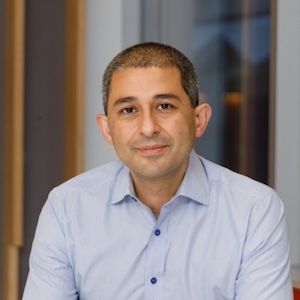Article
11 Percent Chance of Stroke Recurrence in AFib Patients
The chances of having an acute ischemic stroke (AIS) due to atrial fibrillation 14 days post stroke or transient ischemic attack (TIA) is high, according to a study presented today during the start of the 2020 International Stroke Conference being held in Los Angeles this week.
The chances of having an acute ischemic stroke (AIS) due to atrial fibrillation 14 days post stroke or transient ischemic attack (TIA) is high, according to a study presented today during the start of the 2020 International Stroke Conference being held in Los Angeles this week.
In this study, which was a poster presentation by Xiyan Yi, et al., and colleagues from the University of South Florida, Tampa, analyzed a subgroup of the AREST study (Apixaban for Early Prevention of Recurrent Embolic Stroke and Hemorrhagic Transformation). AREST was a multi-center, randomized controlled trial of early apixaban treatment compared to patients with atrial fibrillation who were treated with warfarin one week post-TIA or two weeks post-AIS.
Due to an increased risk of embolic stroke, chronic oral anticoagulation is recommended for most atrial fibrillation patients. But once a stroke occurs, anticoagulation is generally delayed due to the possibility of hemorrhagic transformation. But the question is: What are the chances of having an ischemic stroke in these cases? Well, as much as 11 percent according to the authors of this study.
RELATED: Aspirin for G6PD Deficient Patients May Deserve a Second Look
This study is based on the evaluation of brain magnetic resonance imaging scans to determine stroke occurrence in this group of 91 patients from the AREST study who were treated with warfarin. Of these, 47 were assigned to warfarin and 28 had brain MRI scans 14 days after the initial stroke. Prior to the MRI, 10 patients were receiving an anticoagulation, four developed recurrent AIS and two had hemorrhagic transformation. Of 18 patients who did receive anticoagulation therapy or low dose therapy, one had a TIA, two had recurrent AIS, and two had hemorrhagic transformation.
While 11 percent of patients had recurrent AIS, 11 percent had hemorrhagic transformation of the prior stroke which is higher than the 4.9% and .5% rates previously reported for stroke and hemorrhage. But those numbers, the authors say, were clinically reported and most likely low. The MRI-diagnosed cases suggest a more realistic occurrence rate.
"Although AREST was a small study, it suggests that tools designed for annual risk estimation may not accurately reflect the full aggregate of recurrent stroke or bleeding during the subacute phase, especially if asymptomatic. Improved surveillance may help provide safer decisions on timing of anticoagulation for stroke patients with AF," the authors wrote.
REFERENCE
Nhi Tran, M.S. "Atrial Fibrillation and Recurrent Stroke on Brain Mri: The "natural History" of 14 Days Without Therapeutic Anticoagulation." International Stroke Conference. Feb. 19, 2020. Abstract: LBP20





